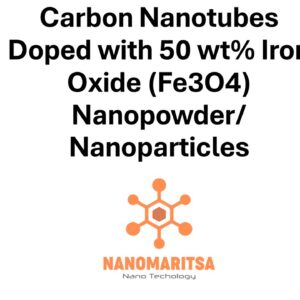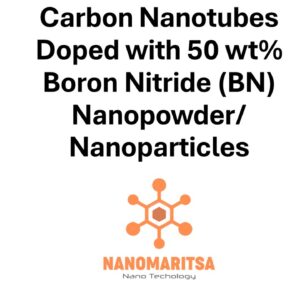Carbon Black & Carbon Nanotube Mixed
Purity: >97.5%
A Carbon Black and Carbon Nanotube (CNT) mixture combines the properties of both carbon black and carbon nanotubes to create a composite material that benefits from the unique features of each component. Here’s a breakdown of each material and their combined potential:
Carbon Black
Carbon black is a fine black powder made from burning hydrocarbons in insufficient air. It is composed of tiny, nearly spherical carbon particles with a large surface area. Carbon black is widely used as a reinforcing filler in rubber products (especially tires), pigments in inks and coatings, and as a conductive filler in plastics. It has a high surface area, is electrically conductive, and offers a low-cost solution for various industrial applications.
Carbon Nanotubes (CNTs)
Carbon nanotubes are cylindrical tubes made from a single layer (single-walled CNT) or multiple layers (multi-walled CNT) of carbon atoms arranged in a hexagonal lattice. CNTs have exceptional mechanical properties (such as strength and flexibility), electrical conductivity, and thermal conductivity. They are often used in electronics, energy storage, composites, and advanced materials for applications that require high performance.
Carbon Black & CNT Mixed
When carbon black is mixed with carbon nanotubes, the resulting composite material leverages the advantages of both:
- Enhanced Conductivity:
- Carbon black contributes electrical conductivity due to its particulate nature.
- CNTs, being highly conductive, further enhance the composite’s overall electrical conductivity. This combination is especially useful in applications like conductive polymers, sensors, or supercapacitors.
- Improved Mechanical Properties:
- Carbon nanotubes are known for their superior strength and flexibility. When mixed with carbon black, the composite can gain better mechanical properties such as increased tensile strength, durability, and resistance to wear.
- The carbon black particles help in dispersing CNTs evenly within the matrix, improving the overall mechanical performance.
- Cost-Effectiveness:
- Carbon black is relatively inexpensive compared to carbon nanotubes. By mixing them, the resulting material can maintain some of the high-performance properties of CNTs while reducing cost.
- Applications:
- Conductive Materials: This mixture can be used in applications requiring conductive materials, such as electrodes for batteries, capacitors, and sensors.
- Composite Materials: Carbon black and CNT composites are used in manufacturing advanced materials, particularly in industries like automotive (e.g., conductive tires), aerospace, and electronics.
- Energy Storage: The mixture may improve performance in energy storage devices like supercapacitors, offering both high conductivity and good structural integrity.
- Coatings and Inks: The composite may also be used in conductive coatings or inks for printed electronics and sensors.
In summary, mixing carbon black with carbon nanotubes creates a material that blends the high conductivity, strength, and performance of CNTs with the cost-effectiveness and functional properties of carbon black. This combination opens up new possibilities in various fields such as electronics, energy storage, and materials science.
Technical Properties:
| Color | black | |||
| pH | 8,5-9,5 | |||
| Ash/Moisture Content (%) | <0,4 | |||
| CNT Purity (%) | >97,5 | |||
| CNT Dimensions | O.D.: 40-90 nm/Length: 6,28 µm | |||
| Average Particle Size – CB (nm) | 10-100 | |||
| Specific Surface Area – CB/CNT (m2/g) | 95 | |||
| Resistivity (Ω.cm) | 3-6×10-4 | |||
| Elemental Analysis | C | Ni | Mg | Fe |
| 98 | 0,7 | <0,01 | <0,01 | |
This new powder product has high conductivity and gives good mechanical strength to the doped structure. In the dispersed form, CB prevents agglomeration of CNTs.
| Measurement (gr) | 25 grams, 100 grams |
|---|






